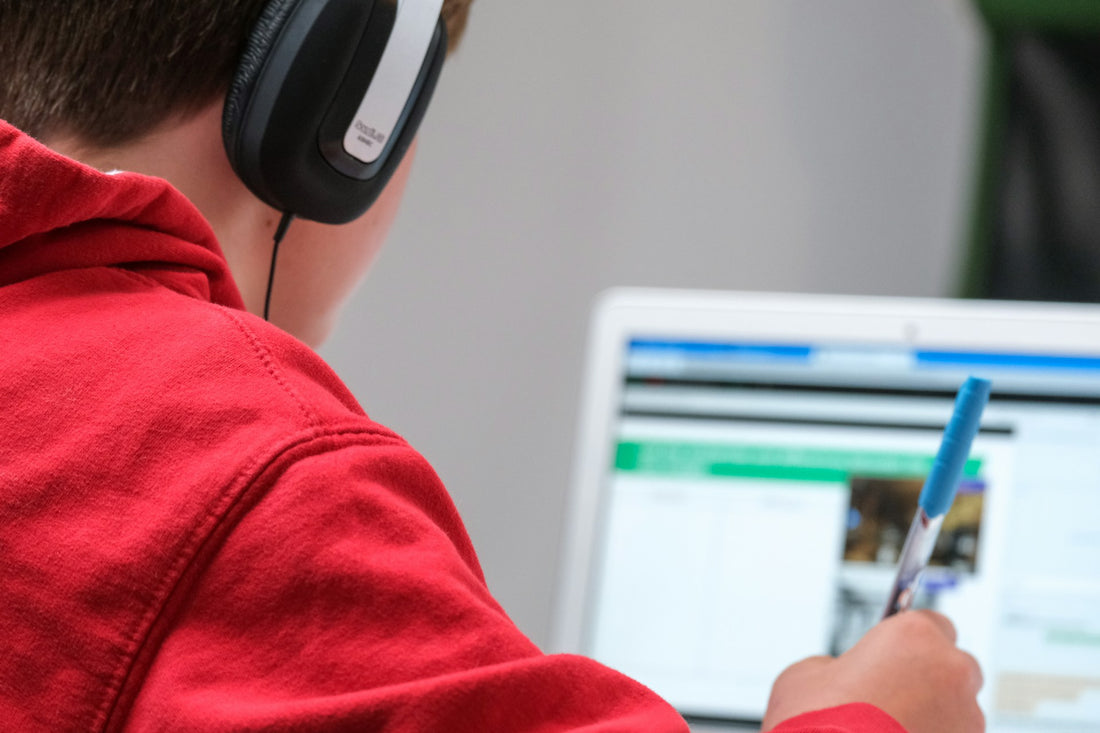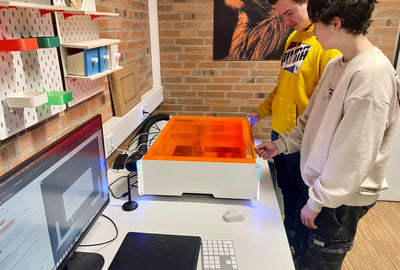Media literacy in schools: Why targeted support is more important than ever
In the digital age, it is the task of educational institutions and teachers to promote media literacy - from children in the lower grades to young people in the upper grades. Here you can find out more about “Why?” and how?”.
Social and technological change make media competence a key qualification

In the first third of the 21st century, it has become a matter of course for children and teenagers to grow up "online" - which also includes ongoing contact and use of laptops, tablets, smartphones and digital information and communication spaces. It is the responsibility of schools, teachers and curricula, as the most important institution for children and young people aged 6 to 18, to respond to this change in society. Media competence is not only necessary as a fundamental skill in order to act critically and safely in digital spheres, but also as a key professional competence for the future.
Already today and even more so in the future, even traditional job profiles are closely linked to the use of new media, the Internet and technologically advanced devices and machines: For this reason, the media skills taught in school will inevitably influence both career choice and opportunities at home and actively influence the global labour market. In keeping with the tasks assigned to educational institutions to teach students and prepare them for adult life, media literacy must therefore be promoted - both through holistic solutions and individual support options.
Although it is the responsibility of teachers to promote this media literacy in school, teachers must not be left alone to do so. Because: Measured against the average age of teachers in the Federal Republic, the majority grew up in a time in which the digital space and the associated media skills were at best a footnote. It is the task of politicians and administrative educational institutions to set the course so that teachers can individually promote media competence - for this they must be given the opportunity to strengthen their own media competence through targeted further training measures, seminars and training courses.
How can media literacy be taught effectively and practically in schools?

Firstly: If you want to promote media literacy, you cannot rely solely on theory. When it comes to teaching media skills at school, educational institutions and teachers should apply the same standards as, for example, chemistry or physics lessons - there, too, theoretical concepts through experiments and practical action are not only conveyed in a more exciting but also more tangible way for students.
Fortunately, there are enough approaches for this: teachers can even set individual priorities and at the same time meaningfully cover the broad spectrum of media competence. At the beginning, it is necessary to consider: What needs to be taught as a basis and which specific topics should necessarily become part of the individual curriculum?
Some specific topics are required regardless of the further design of the curriculum:
- Classification and reflection of one's own usage habits with regard to technological devices (and especially with regard to "smartphone addiction" and the like)
- Tips for staying safe online, coupled with the importance of your own data protection and privacy
- Conscious use of social networks and content that has been made public on one's own initiative, such as images and videos
- critical handling of information on the Internet and ways of classifying it
- specific topics that play a greater role, especially in adolescence, such as sexting, cyberbullying or illegal downloads
Some of these topics require a greater investment of time and a more intensive approach than others when teaching media literacy at school. It therefore stands to reason that students should learn early on how to research information on the Internet in a targeted and conscious manner, and at the same time distinguish “bad” from “good” information. Or to put it bluntly: Students must be able to recognize fake news in particular, because the course for further character and professional development is already laid at school age.
When it comes to media skills taught in school, protecting one's own privacy and acting safely online must also play special roles. Many students, which is hard to blame given their age, are far from aware of the lasting damage they can do to themselves in digital spaces by neglecting their own privacy, data protection and security. A sensible connection to the sub-area of social networks is recommended here, but technical aspects of IT security also need to be taught.
Promote media literacy - in an entertaining way

As made clear at the beginning, media literacy in schools should not be a “dry” theory. This is for two reasons: firstly, students are often already familiar with basic theoretical concepts relating to new media due to their leisure activities; on the other hand, the learning effect is proven to be greater when theory and applicable practice are combined.
For example, students could be given a research and presentation task, completely independent of their subject. Teachers request that students provide screenshots and/or printed research materials as evidence of the content in the presentation created for this purpose. For many students, those with limited media literacy, this evidence will in most cases be limited to Wikipedia or the first Google result. In practice, an important lesson can already be conveyed: counter-research on the Internet and the uncritical equation between facts and content, which still occurs too often. At the same time, through the presentation part, students learn the scope of essential software solutions such as PowerPoint, Excel and Co.
A simple rule of thumb here could be: the more entertaining and technologically sophisticated, the greater the learning effect of such a practical part. A good example of this: our Mr Beam laser cutter. Students will hardly have any contact with a powerful desktop laser cutter in their free time, which makes it all the more important from the teachers' perspective to introduce them to the potential of technological progress. - For example, knowledge about digital manufacturing methods can be imparted, or a student company can be founded as part of a school project. Last but not least, students will probably have far more fun with a laser cutter and digital manufacturing processes than with a spreadsheet in Excel - although this is of course also legitimate learning content.
Challenges and solutions: Teaching media literacy at school requires adjustments
Unfortunately, it is practically like this: Anyone who wants to promote media literacy at school will inevitably encounter (quite a few) challenges. This often starts with the school's tight budget and outdated technical equipment. Furthermore, a lack of skills and at the same time a lack of further training opportunities on the part of teachers are a limitation that needs to be eliminated.
The challenges in this regard can be divided into four areas:
- organizational challenges
- Lesson development
- technological hurdles
- lack of personnel competence
The organizational challenges include the aforementioned procurement of the necessary hardware and software that is necessary for the practical teaching of media skills in schools. At the same time, the development of lessons must be adapted so that we not only talk “about” media, but also learn “with” media.
Traditional teaching content must be interlinked with media literacy in schools. Technological hurdles and a lack of personnel competence sometimes go hand in hand: the school or politicians have to provide the technical infrastructure, or the politicians have to provide funding; the lack of personnel competence can be improved through training and further education. External advisors or mentors could also be placed at the educators' side and even integrated into the lessons.
Teachers, school community and parents must act holistically
It would be wrong to only assign this diverse task to teachers. The school administration must take action, as do the parents in particular. The latter are largely responsible for the level of media literacy knowledge with which students approach the learning content taught in school. It is also the responsibility of parents to promote media literacy in their private lives and in their free time. Ongoing monitoring, especially for younger students and with regard to social networks, such as Instagram or TikTok, and safe digital spaces, must play just as much a role in the parents' home as selectively granted autonomy so that students can independently gather their own experiences based on their knowledge.
Media literacy in schools should be prioritized
Promoting media literacy also means teaching media and digital spaces practically. There are enough examples that this is still happening in an inadequate form: educators complain about a lack of further training opportunities or about widespread cyberbullying and hate messages - another indication that there is already a lack of media literacy to recognize that the Internet and social Networks are not legal vacuums. Germany is already one of the backbenchers in terms of technology and digital technology: Unless media literacy is expanded more strongly in schools, today's students will have to bear the consequences of this in young adulthood at the latest.






